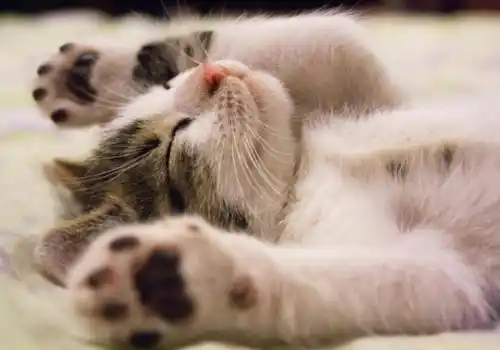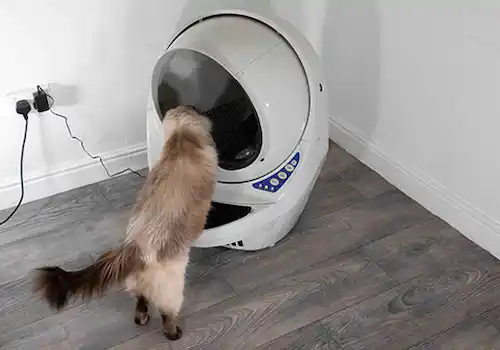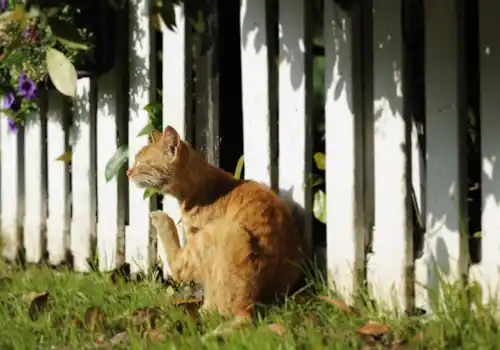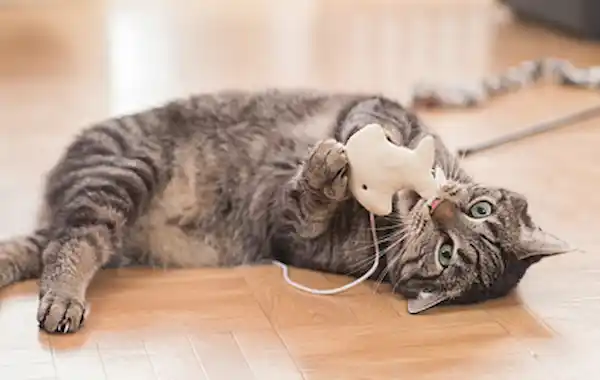Are you thinking about whether you should get your cat microchipped or not? We take a look at everything involved in the process of having your cat microchipped, and whether it is compulsory to get your cat microchipped.
It is a legal requirement to get your cat microchipped — or you could face a £500 fine.
Microchipping is still the safest and most reliable way of identifying your cat. Since using microchip technology, vets have seen a reduction in collar-associated injuries, and many lost pets have been reunited with their owners quickly and safely.
How big is a microchip and will it hurt my cat?
There are now a few variations of the microchip itself - some which have extras, such as measuring the body temperature - but essentially the procedure, size, and shape of the microchip remains the same.
Slightly smaller than a grain of rice, the microchip sits comfortably undetected by the cat under the skin between the shoulder blades. However, a common misconception is that microchips are programmed with satellite technology - unfortunately they cannot track your cat's whereabouts.
The procedure is very simple and is no more painful than an injection. A cat will not be aware of the microchip's presence once inserted.
How old does my cat have to be to be microchipped?
Kittens can be microchipped at any age by a trained implanter (a breeder, rescue centre staff, nurse or vet) but are usually done at vaccination stage (nine-12 weeks) to make sure they are identified before they are let out. Although, the new government legislation now requires cats to be microchipped before they reach the age of 20 weeks.
The microchip is inserted by a needle and it’s often recommend doing it at the time of neutering, when the kitten is under anaesthesia to prevent discomfort. The implanter will decide on the microchip they use and therefore the database that this microchip is linked to. There are several different databases but all microchip scanners in the UK are able to detect the code that is unique to your cat, regardless of the type of 'chip.
How much does it cost to have my cat microchipped?
Expect to pay around £20 to £30 for a microchip, and look out for charities, or your own vet doing special offers. Some charities also offer free microchipping events on certain days of the month - ask your local animal charity if they offer a scheme like this.
Around two weeks after implantation you will receive some documents from the database company with your registration, address, and phone numbers. It is important that you check these are correct as this information will be used to contact you in the event that your cat is lost and scanned. Should you move house or change your telephone details it is then your responsibility to contact the database company and update your details.
Microchips are ultimately used for identification should your cat stray or be taken, however they are also used for identification in the Pet Passport Scheme, can be useful in ownership disputes, and more recently have become useful for other purposes such as microchip cat flaps and feeders.
Why should I get my cat microchipped?
Having your cat microchipped is something that every owner should have done, find out here just why it's so important.
- Microchipping offers cats a safe and permanent method of identification and increases the chances of a lost feline being safely reunited with his owner.
- Microchipping is the most effective way of identifying a lost pet ('chips don't come off or put the cat at risk of injury like some collars can).
- Each microchip has a unique number which is stored on a national database. A scan of the chip by an authorised body such as an animal warden reveals the owner's name and address from the database's records.
Petlog is run and managed by the Kennel Club and handles the details of microchipped pets - currently over three million animals residing in the UK. The most common are dogs and cats, but there are also rabbits, ferrets, horses, birds, fish, reptiles, amphibians, even an elephant! And as of April 6, 2016, the microchipping of dogs was made compulsory by law.
If your pet is lost while you are travelling in Europe, you can still be traced as Petlog is the UK member of the European Pet Network.
Is it against the law to not have my cat microchipped?
As collars and tags can be easily lost, microchipping is the best way of permanently identifying your pet and proving you are his owner.
New government legislation to introduce compulsory cat microchipping was laid out in Parliament on 13 March 2023. Owners must have their cat microchipped by 10 June 2024, and owners found not to have microchipped their cat will have 21 days to have one implanted, or may face a fine of up to £500.
Cats Protection says that two in three cats taken into its care are not microchipped, costing the charity over £190,000 a year to chip them. The charity deals with around 40 ownership disputes annually too, the majority of which involve cats handed in as strays that are not microchipped.
When a cat comes into their care, the first thing they will do is look for some kind of identification, including scanning for a 'chip. In a lot of cases, there is no 'chip so they will have no option but to trawl lost and found registers, and to advertise the cat as missing. This is a very time-consuming process with no guarantee that we will ever locate the owner.
Making sure a cat is easily identifiable is vital to increase the chances of a happy reunion, so now compulsory microchipping has been brought in, many of these problems will hopefully be solved.
How can a microchip help reunite me with my cat?
From a pet owner's view, a microchip could be all that stands in the way of you being reunited with your cat should he go missing. PDSA have said that microchipping is the best way of permanently identifying your pet and proving you are the owner. Collars and tags can easily be lost, removed or get caught on a branch, sometimes causing terrible injuries. Microchips do not carry the same risks and cannot be tampered with. Once inserted, your pet will be uniquely identifiable for the rest of their life.
Please remember, if you do choose to use a collar as well, ensure it is a 'quick-release' type to prevent serious accidents and injury.
Why should I neuter my cat?
It's also highly advisable to neuter your pet. One of many reasons for this is that entire queens and toms tend to wander far from home in search of a mate. If your cat is a wanderer, why not look at enriching your garden? Provide areas where he can climb, and things to perch on, hide and stalk in. This may encourage him to hang out more in his own garden. You might also want to consider enclosing it to keep him safe.
Read more about making your garden cat-friendly.
Remember, if your cat does go missing, don't lose hope. They are resourceful creatures!








